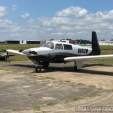With or Without Flaps?
-
Members Online
- MikeOH
- Lax291
- Nico1
- 00-Negative
- JoeM
- Aerodon
- DXB
- varlajo
- BrianW
- Planegary
- Sixstring2k
- ArtVandelay
- Gee Bee Aeroproducts
- 201guy
- MDMooney
- hammdo
- takair
- FoxMike
- ericrynehess
- amillet
- MarkD34M
- Guy123
- Rmnpilot
- redbaron1982
- Mister_Bevilaqua
- Scott Ashton
- TCC
- Flyler
- Joe Linnebur
- Paul Thomas
- vorlon1
- flewmanchu
- 201Steve
- Red Leader
- CCAS
- bradp
- Bartman
- kortopates
- M20R
- Parker_Woodruff
- Steve Tadlock
- 231MJ


Recommended Posts